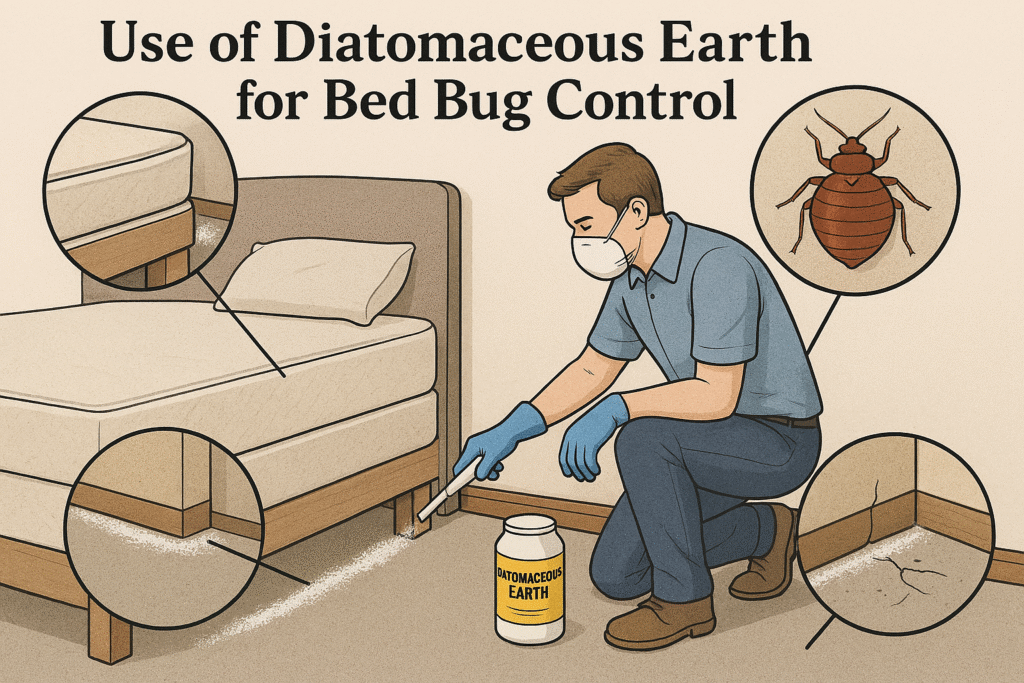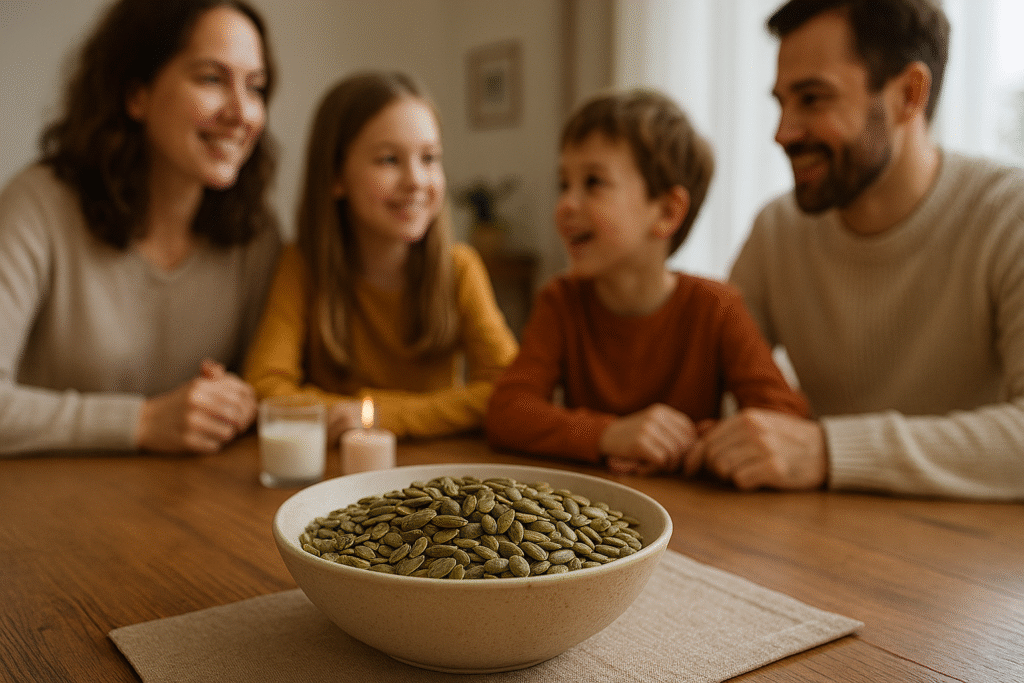If your home or office is short on light and if you are looking for some best plants for indoor gardening that will thrive in the low light areas in your home then keep reading.
Actually, low light conditions are always a challenge for the indoor gardeners but don’t worry there are few plants that can happily thrive in low light conditions and most of them are from tropical areas where they grow deep in the jungle below the huge forest trees in dappled shade.
In this article, I will be talking about some best indoor plants that will thrive happily in low light conditions and are also easy to take care of!
Before I jump into the plant list, I want to clear some basic concepts regarding light that we receive indoor in our home.
Usually, south-facing windows or south-facing rooms with many windows get to the highest light that which considered as bright indirect light and west or east-facing windows get medium indirect light and north-facing rooms or rooms with no windows are considered as low lightroom.
For more clarification about light type see the image below:

You can see the area next to the window or balcony, it is considered as a bright indirect light area and after that, it comes to a medium-light area and then a low light area.
Now I guess now we are pretty clear with light types.
DO YOU KNOW?
Plants also give us signals or indications that they are not happy with current light conditions. If we have placed them below their actual ideal light conditions; in such situations plants start growing thin or leggy and in some cases, the plant sleeve colour also changes it will turn yellow in colour.
In such a situation try to move your plant towards more light, towards window or supply them with artificial lights.
Do you know?
Plants also give us signals or indication that they are not happy with current light conditions if we have placed them below their actual ideal light conditions in such situations plants start growing thin or leggy and in some cases the plant sleeve color also changes it will turn yellow in color in such situation try to move your plant towards more light towards window or supply them with artificial lights.
7 Best Plants for Indoor Gardening
Low light plants grow better and faster if we provide them with medium indirect light. We call them low light because they have potential or can I use word power to thrive in low light areas and I think they are a great option for indoor gardening.
Plants like Snake plants will do very well in bright indirect light even direct light but will also thrive in less than ideal conditions and they are considered low light plants as well.
1. ZZ Plant (Aroid Palm)
ZZ plant is really a great option for low light areas. ZZ plants tolerate any dark corner and love to be neglected and it is also tolerant to dry conditions.
The ZZ plant looks great too It produces upright, slightly arching stems covered in shiny dark green leaves. You might have seen the ZZ plant in many offices, in restaurants or in malls.
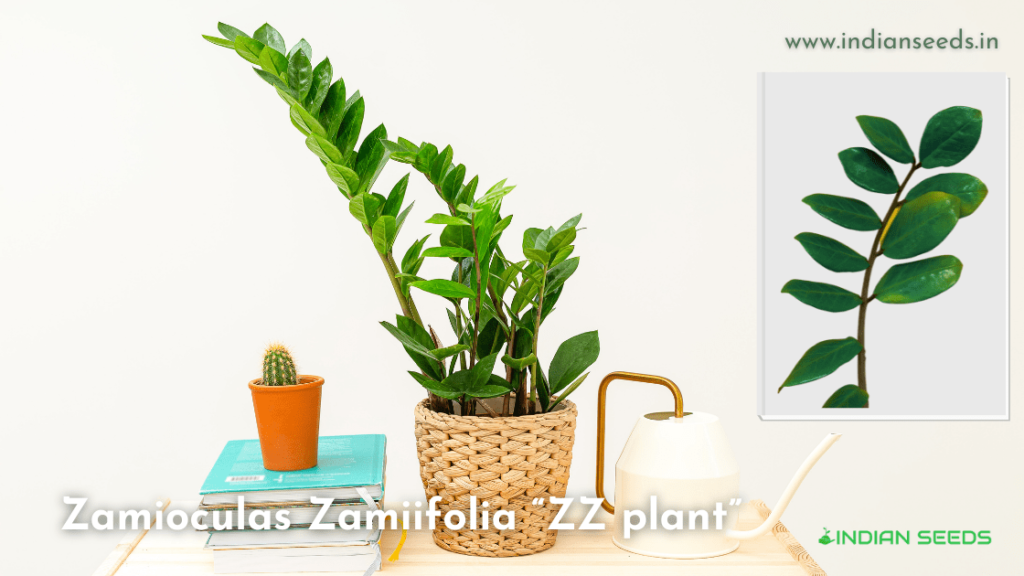
Because of their less demanding nature, they can be kept in far areas of your home and around 15 feet away from a balcony or window.
One thing you have to be careful about the plant is watering water carefully because they are susceptible to root rot. They store water in their stems and in their roots so water whenever you feel that the soil is dry to touch and for their fast growth for their shiny green leaves you can feed them with seaweed liquid solution once or twice a month.
2. Snake Plant
The next plant on the list is the Snake plant. They are most tolerant of low light areas and the snake plants are unique, handsome and very forgiving in nature.
They can adapt to almost any place in your home or office as they are not fuzzy about the quality of life they receive. Also, they are extremely drought tolerant means if you forget to water, it won’t die.
You will love their edgy upright leaves with colour variation which adds a unique architectural accent to the interior and apart from that it is also one of the most recommended plants to improve indoor air quality.
The optimal place to keep this unique and low maintenance snake plant is the bedroom because it converts carbon dioxide into oxygen at night.
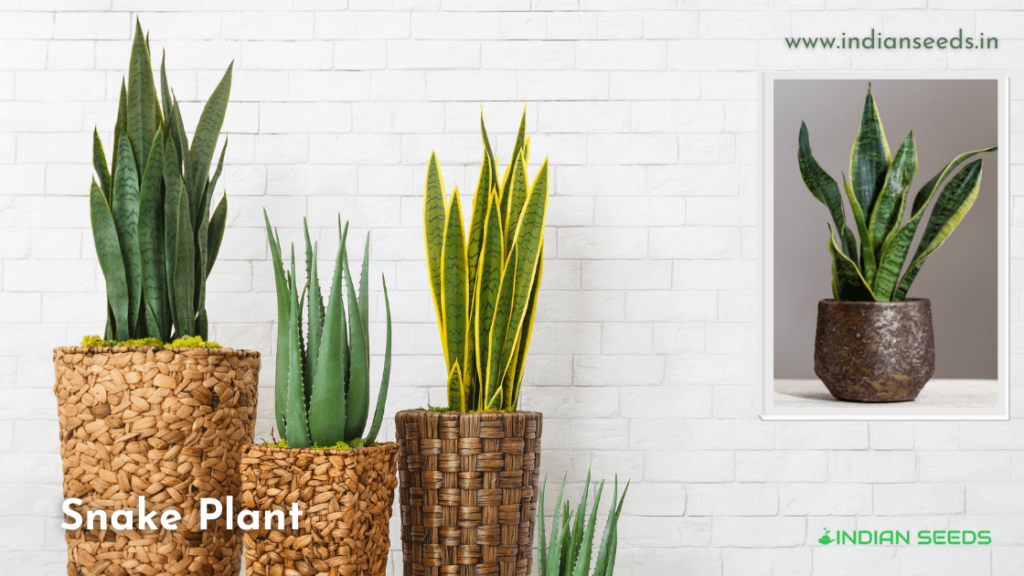
Snake plants need a well-draining potting mix that doesn’t hold a lot of water like Succulents and ZZ plants. Snake plants are also susceptible to more watering, so water them carefully like Succulents and also use a well-draining potting mix that doesn’t hold water for a long time.
One basic rule about plant placement is that plants with brighter colours or variations like yellow, pink, red need more light or more energy to develop colour variations in use.
So if you place this kind of plant in darker corners, they will start shading their colours and their leaves will turn into a green colour for low light areas always choose dark greener varieties of plants.
3. Parlor Palm
Palms are popular indoor plants for many decades or they say since the victoria era but only a few pumps do better in low light areas like Parlor palm.

Parlor palm is also commonly called Chamaedorea elegans. It is a slow-growing palm that grows extremely good in low light conditions. It grows four feet tall and makes a bold statement in any room. Parlor palm only needs to be water when the soil feels dry to the touch. For their lush foliage, you can fertilize with seaweed liquid solution or vermicompost once or twice a month. You will get this parlor pump in various sizes from this tabletop to three feet in height.
4. Ferns
The next plant on the list is the Fern. Ferns come in a balance of color size varieties and they are especially ideal for low light areas and for shade gardens. Ferns add delicate feathery texture and tons of green to windows.
All you need is dapple shade and enough moisture and humidity to encourage ferns to grow. Ferns flourish during the monsoon. There are numerous species and varieties available in ferns but commonly used ferns for indoor gardening are Maidenhair Ferns, then Burnished Fern
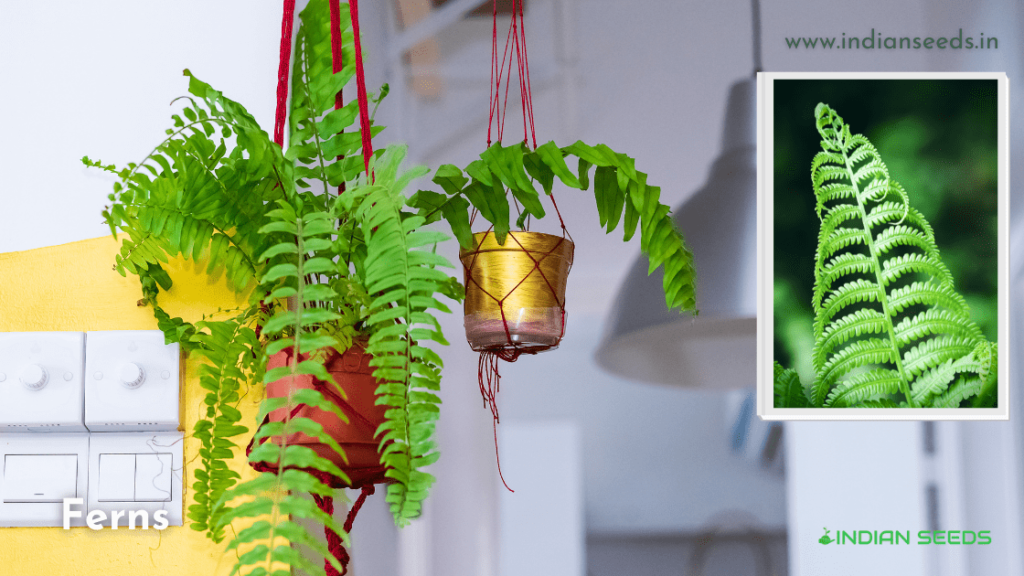
These unique looking crinkly leaves look so lovely, they add texture to any indoor space and these ferns are especially good for low light areas because they have a dark green color.
Apart from this, you will find Boston Fern with dark green color that is good for low light areas. About their care: they are from tropical regions so they love moist humid weather. So always keep the soil a little moist, water frequently and they love misting so during the dry season or in winter mist the leaves are regularly with water.
5. Aglaonema Plant
Aglaonema is another best plant for low light conditions. Aglaonema is commonly called as Chinese Evergreen plant. They are so low maintenance plants that they can grow without water for up to two weeks.
A beautiful addition to any home garden, Aglaonema offers unique and intricate texture and color in the world of green.
These elegant tropical plants feature an ample range of speckled or dapple leaves in the numerous shade of green, cream or pink. For low light areas use light green or green color varieties because in Aglaonema, nowadays you will find many color variations in the range of pink or red.
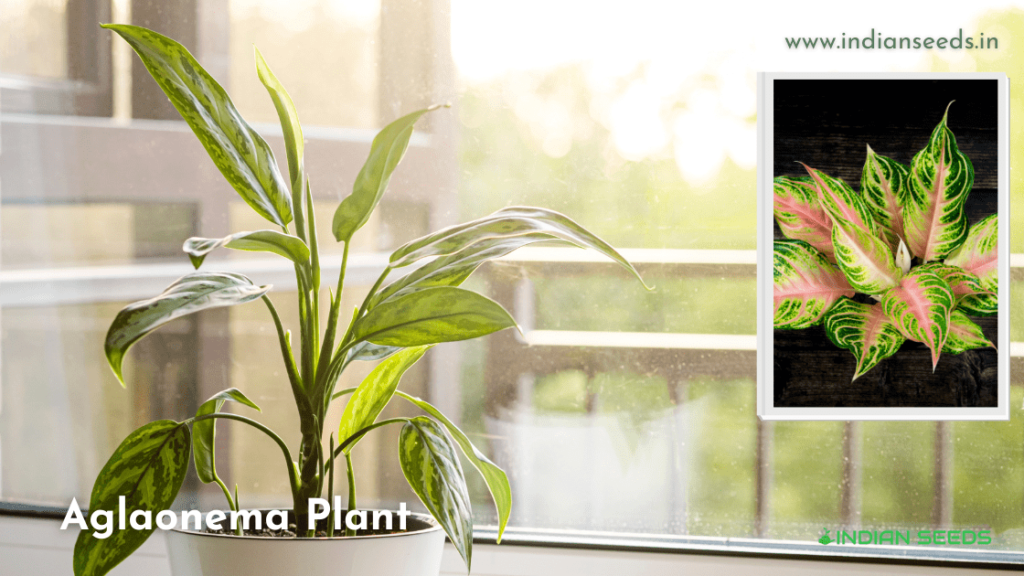
About Aglaonema care; most important avoid overwatering as I told you they need very less water. Always check the soil before you water your plants and use well-drained potting mix, soil that doesn’t hold water and moisture for a very long time.
Once they settle down in your home they will grow happily. This plant reproduces from the roots, new baby plants grow from the mother plant. For fertilizer, you can use seaweed solution, for their big foliage once in a month.
6. Syngonium Plant
The next plant is a hardy fast grower and tropical plant Syngonium also commonly called as Arrowhead Plant or Vine Syngonium.
It can tolerate a wide range of low light conditions, its handsome green foliage with some variation can lighten up any corner in your home. Syngonium plants really need low maintenance.

They grow very quickly, just keep them away from direct sunlight and use well-draining potting soil, rich in vermi-compost or compost because they are tropical plants they need rich dense soil and water when the top of inch soil dries out. That’s it!
They don’t even require regular fertilizer applications. Synchroniums are versatile plants just like money plants. If you want their compact bushy look then trim new growth regularly or if you want a trailing or hanging look then just allow them to grow for more.
7. Money Plant
Last but not least is the widely popular Money Plant. Money Plant is probably the easiest of all interior gardening plants to grow. You can get many varieties in money plants. The trailing wine has pointed heart-shaped glossy green leaves with many color options but money plants especially with this dark green color foliage will survive in any corner of your home.

In low light conditions, they are very less demanding and fast growers, just keep them away from direct sunlight and use nitrogen drip fertilizer for their fast and bushy growth.
Keep pruning leggy growth and that’s it and one important point for all inter plants avoid overwatering.
This is the list of the best low light plants for indoor gardening and these plants are a bit forgiving plants and still create lush green space in your home.
Thanks for reading.
Happy Gardening!
Blog Inspired by Pratiksha (Horticulturist and Landscape Designer). Check out here YouTube Channel Garden Vibes.
Recent Posts
Cold Pressed vs Regular Neem Oil: Which One Is Better?
Spread the loveNeem oil has been a staple in natural health, skincare, and agriculture for centuries. Extracted from the seeds of the neem tree (Azadirachta indica), this oil is packed with powerful compounds like azadirachtin, nimbin, and fatty acids that make it a go-to solution for everything from pest control to skin care. But when […]
Use of Diatomaceous Earth for Bed Bug Control
Spread the loveBed bugs are among the most persistent household pests, causing sleepless nights and frustration for homeowners worldwide. While chemical treatments are common, many people seek safer, eco-friendly alternatives. One such solution gaining popularity is Diatomaceous Earth (DE). This natural substance offers an effective, non-toxic way to combat bed bug infestations. In this blog, […]
Health Benefits of Eating Pumpkin Seeds
Spread the lovePumpkin seeds, also known as pepitas, may be small, but they pack an incredible nutritional punch. These flat, green seeds are loaded with essential vitamins, minerals, healthy fats, antioxidants, and fiber, making them one of the most underrated superfoods. Whether eaten raw, roasted, or as pumpkin seed oil, they offer numerous science-backed health […]



